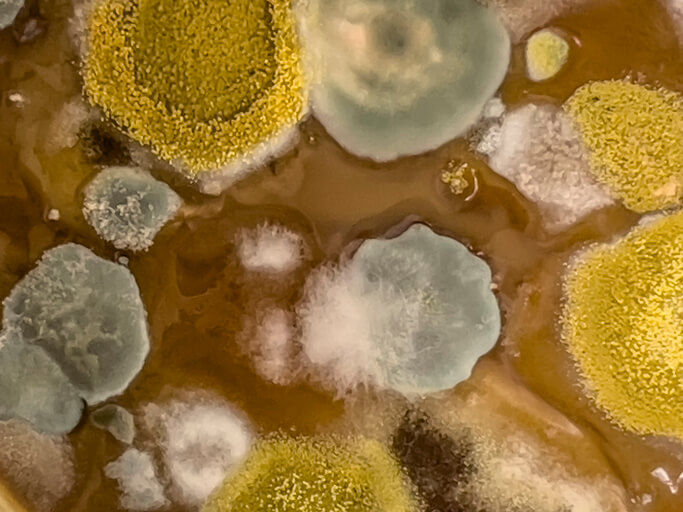సబాక్యూట్ సైనసిటిస్: ఇది ఎంతకాలం ఉంటుంది మరియు లక్షణాలు ఏమిటి?
- Dr. Koralla Raja Meghanadh

- Aug 7, 2023
- 3 min read
Updated: Apr 23, 2024

సబాక్యూట్ సైనసైటిస్, సైనసైటిస్ యొక్క రెండవ దశ, సైనసైటిస్ ప్రారంభమైన 15 నుండి 45 రోజుల వరకు ఉంటుంది. ఇది అక్యూట్ సైనసిటిస్ దశ తర్వాత సంభవిస్తుంది. ఈ దశలో, తీవ్రమైన దశతో పోలిస్తే లక్షణాల తీవ్రత తగ్గుతుంది. దీంతో వ్యాధి తగ్గుముఖం పడుతుందనే తప్పుడు ఆలోచన రోగికి కలుగుతుంది. కానీ అంతర్గతంగా, సంక్రమణ పురోగతి కొనసాగుతుంది.
సబాక్యూట్ సైనసిటిస్ చికిత్స చేయకుండా వదిలేస్తే క్రానిక్ (దీర్ఘకాలిక) సైనసిటిస్గా పురోగమించే అవకాశం ఉంది. వైద్య జోక్యం లేకుండా, సంక్రమణ తొలగించబడకుండా దీర్ఘకాలిక దశకు పురోగమించే అవకాశం ఉంది.
సబ్అక్యూట్ సైనసైటిస్కి కారణమేమిటి?
అక్యూట్ సైనసిటిస్కు చికిత్స చేయనప్పుడు లేదా పాక్షికంగా మాత్రమే చికిత్స చేసినప్పుడు, అది స్వయంగా నయం చేయవచ్చు లేదా సబాక్యూట్ దశకు వెళ్లవచ్చు. తీవ్రమైన సైనసిటిస్ అనేది ప్రారంభ దశ మరియు ఇది వైరల్ ఇన్ఫెక్షన్ వల్ల వచ్చే సైనసైటిస్ యొక్క తీవ్రమైన రూపం, ఇది బ్యాక్టీరియా సైనస్ ఇన్ఫెక్షన్గా మారుతుంది. సాధారణంగా, అక్యూట్ సైనసిటిస్ 15 రోజుల వరకు మాత్రమే ఉంటుంది. ఈ 15 రోజులలో, వ్యాధికి చికిత్స చేయకుండా వదిలేస్తే లేదా పాక్షికంగా చికిత్స చేస్తే, సైనస్లలో మంట కొనసాగుతుంది మరియు సబాక్యూట్ సైనసైటిస్గా పురోగమిస్తుంది. లక్షణాల తీవ్రతలో తగ్గుదల 15 రోజుల తర్వాత గమనించబడుతుంది, ఇది సబాక్యూట్ దశకు మారడాన్ని సూచిస్తుంది. సబాక్యూట్ సైనసైటిస్ దశ సాధారణంగా సైనసైటిస్ ప్రారంభమైనప్పటి నుండి 15 నుండి 45 రోజుల వరకు ఉంటుంది.
సైనసిటిస్ కారణాల గురించి మరింత తెలుసుకోవడానికి, మా కథనాన్ని చదవండి "సైనసిటిస్కు కారణమేమిటి?".
సబాక్యూట్ సైనసిటిస్ లక్షణాలు
సాధారణంగా, సైనసిటిస్ లక్షణాల జాబితా అన్ని దశల్లో ఒకటే. ఒక రోగిలో లక్షణాల సంఖ్య మరియు తీవ్రత మాత్రమే మారుతాయి. అక్యూట్ సైనసిటిస్లో, మనం అధిక తీవ్రతతో 4 నుండి 5 లక్షణాలను అనుభవించవచ్చు. సబాక్యూట్లో, మనం తక్కువ తీవ్రతతో అవే లక్షణాలను అనుభవిస్తాము మరియు క్రోనిక్ సైనసైటిస్లో మనం 1 నుండి 2 లక్షణాలను గణనీయంగా తక్కువ తీవ్రతతో మాత్రమే అనుభవిస్తాము. ఎందుకంటే ఇన్ఫెక్షన్ కొనసాగుతూనే ఉంటున్నా కానీ ఇన్ఫెక్షన్ మన శరీరం యొక్క రోగనిరోధక శక్తితో రాజీ పడుతుంది. ఈ రెండింటి మధ్య సమతుల్యతను ఏర్పడడంతో రోగికి తక్కువ ఫిర్యాదులు ఉంటాయి. రోగులు వారి లక్షణాలు తగ్గుతున్నందున వారి వ్యాధి కూడా తగ్గిపోతుందన్న అపోహలో ఉంటారు. కానీ వాస్తవానికి, ఇన్ఫెక్షన్ మరింత తీవ్రమవుతుంది మరియు ఒక సైనస్ నుండి మరొక సైనస్కు మరియు శరీరంలోని ఇతర భాగాలకు కూడా వ్యాపిస్తుంది.
సైనసిటిస్ లక్షణాల జాబితా ఇక్కడ ఉంది:
నాసికా ఉత్సర్గ లేదా ముక్కు కారటం
ముక్కులో బ్లాక్ లేదా మూసుకుపోయిన ముక్కు
తల నొప్పి
ముఖంలో నొప్పి
ముక్కు వెనుక నుండి గొంతు వరకు కఫం కారుతున్న అనుభూతి
the need to frequently clear the throat
Sore throat and throat pain that occur often
Frequent bouts of coughing
Diagnosis for subacute sinusitis
Subacute sinusitis is diagnosed by the doctor using your symptoms and medical history. They may also use a nasal endoscopy to look for signs of inflammation in the nasal passages and sinuses. This can include things like nasal polyps, mucoid discharge, or pus.
If standard medications fail to improve your symptoms, your doctor may suggest a CT scan. This scan can provide detailed images of your sinuses, allowing your doctor to determine which sinuses are affected and the severity of the infection in each sinus.
Usually, subacute sinusitis is diagnosed with a nasal endoscopy. However, a CT scan may be needed if your symptoms don't improve or if there are complications.
To learn more about diagnosis, read our article "Sinusitis Diagnosis - How to Identify Sinusitis?"
Treatment options for subacute sinusitis
As said earlier, the chances of subacute sinusitis turning into chronic sinusitis are always higher. So it is crucial to consult a doctor for a proper diagnosis and treatment plan for subacute sinusitis. The treatment may vary depending on the underlying cause and severity of the condition. Usually, the standard treatment for subacute sinusitis involves treating it with antibiotics and minor surgery if necessary. The treatment for subacute sinusitis is similar to acute sinusitis. The only difference is that the treatment will be slightly aggressive in subacute when compared to acute.
Antibiotics and other medications
In subacute sinusitis, the bacteria present are gram-positive bacteria. So we treat subacute sinusitis with antibiotics that act on gram-positive bacteria for at least 15 days. Along with antibiotics, we also use other supportive medications like antiallergic medications in case of allergies, and decongestants like xylometazoline and oxymetazoline - otrivin nasal drops are also essential.
The antibiotics that act on gram-positive bacteria will cause disturbance in the bacterial flora in our intestines, leading to diarrhea and loose stools. So to address this issue, doctors may prescribe lactobacillus, which can aid in the recovery of the lost flora in the intestines.
Surgery
In most cases of subacute sinusitis, surgery is not necessary. However, doctors may recommend a CT scan if they suspect complications in the sinuses. Suppose only one or two sinuses are stalling the healing process and are not responding to antibiotics. In that case, the ENT doctor may suggest minor surgery to drain the infected sinuses and remove blockages. The remaining sinuses will continue to be treated with antibiotics. This targeted surgery approach helps to avoid unnecessary bigger sinus surgery and promotes faster recovery. In contrast, in chronic sinusitis, where surgery is done on all the (around 40) sinuses, in subacute sinusitis, surgery is done only on the affected sinus.
Thankfully as per Dr. K. R. Meghanadh, he does only one or two surgeries for subacute sinusitis. So, the chances of recovery with antibiotics are higher in this stage when compared to chronic.
Written by



Comments